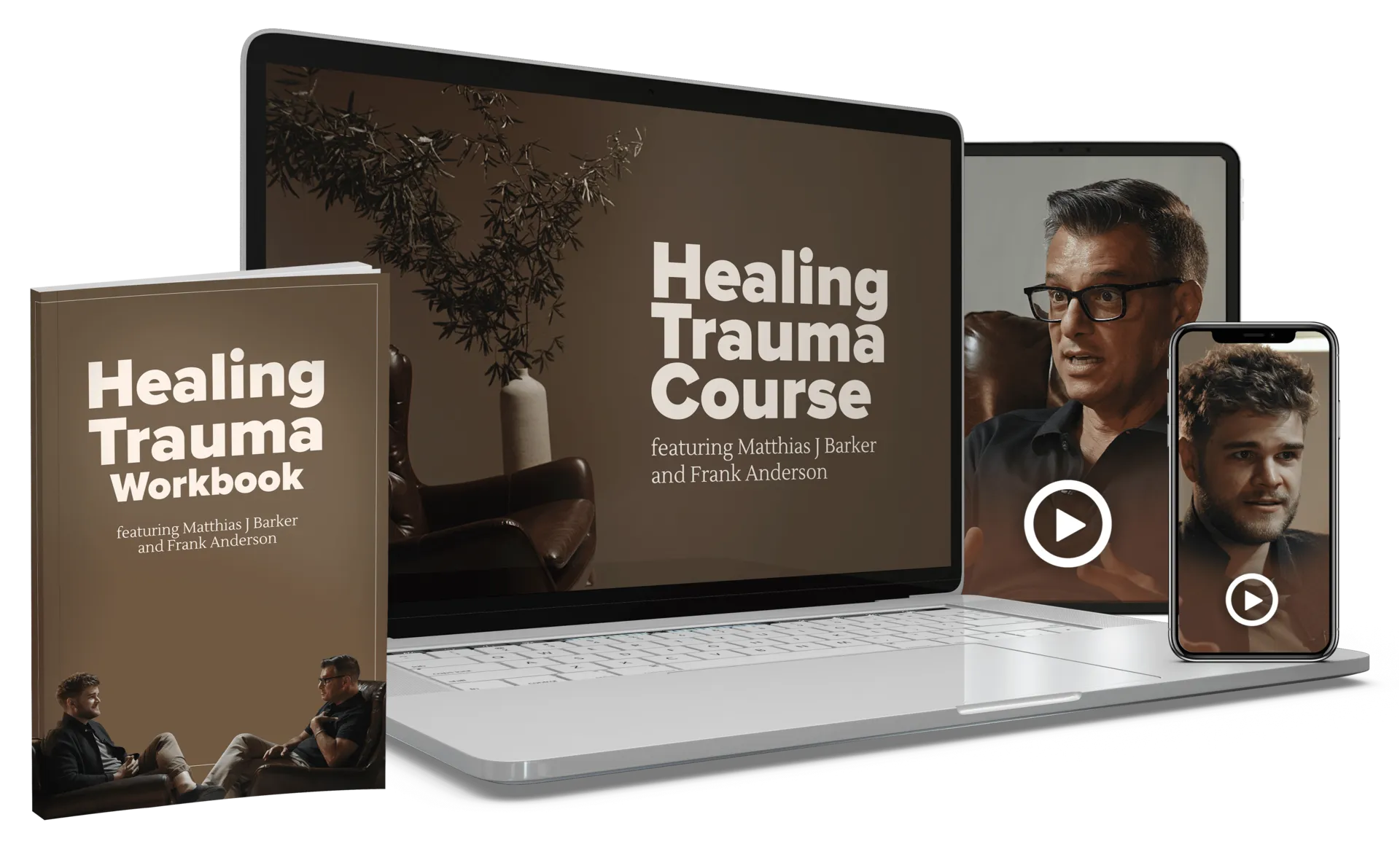
The 'Healing Trauma' Course feat. Matthias Barker and Frank Anderson
Here’s A Sample Of Topics Covered In The Course:
➜ Why the common approach to “get rid of” symptoms are short-sighted (Symptoms like depression, anxiety, and suicidal ideation are rooted in protection. They’re able to tell us something which, if we listen, can open the way to deeper healing)
➜ How to access the healing energy of the “core self” (This is the place within you with the wisdom and goodness to ‘bring home' the parts of you left stranded by trauma. In this module, we discuss in practical terms how to invoke it)
➜ A simple way to get to the root of perceived negative behaviors (From a therapy point of view, here’s how to understand and get in touch with what’s causing distressing symptoms that stubbornly resist change)
➜ A working definition of trauma (It sometimes feels weird to think of things that happened to us as ‘trauma’. Here Frank explains the severity of emotional wounds and what this means for recovery)
➜ A simple question to ask yourself if you suffer from overthinking (Intellect can often be misused to fill a void. Frank’s own story illustrates how this can manifest, and what to do about it)
➜ Why the emotional impact of neglect is more subtle (In cases where trauma isn’t ‘something that happened', but instead ‘what didn’t happen’, it can be tricky to untangle its effects in our psyche)
➜ How to dialogue with wounded or protective parts of yourself (Listen as we role-play how this is done. Discover how to apply this concept to behaviors you want to change, or how this might be used in a therapy setting)
➜ The ultimate test of forgiveness (Also, why this can be empowering and a wonderful catalyst for healing)
➜ The secret to “letting go” and permitting healing to happen (Pain is both universal and inevitable. We discuss how to get to the root of the pain vs. just treating the symptoms)
➜ What full alignment looks like and how to achieve it (When parts of us are in conflict, there’s distress. It’s often this fact that brings people to therapy in the first place. Recognizing the hallmarks of alignment helps orient us to that goal)
➜ Practical advice for “getting at” deeply held wounds (Trauma can be stored in thought, feelings, and physical sensations. We discuss the therapeutic modalities that work to reach them, and why each has an important role to play in healing)
➜ The landmark trauma study you need to know about (And why the context of a traumatic experience matters in predicting its long-term effects)
➜ What does the process of forgiveness look like? (Also, why expecting responsibility from someone who hurt you keep you tethered to them and arrest healing)
➜ The “safety factor” in setting boundaries before you can heal (This is especially key in cases where the person who hurt you is still in your life. Unless you’re able to confidently set boundaries, you’re likely to perpetuate the same relational patterns.)
➜ The 3-step process for releasing trauma and emotional wounds (Hear about the healing power of a ‘corrective emotional experience’. It can feel like a huge weight has been lifted off your shoulders)
➜ The importance of the therapist’s role in facilitating healing (We explore what it means to provide perspective to patients in a therapy setting. This will be interesting to anyone contemplating entering counseling…and to counselors)
➜ And much, much more!
